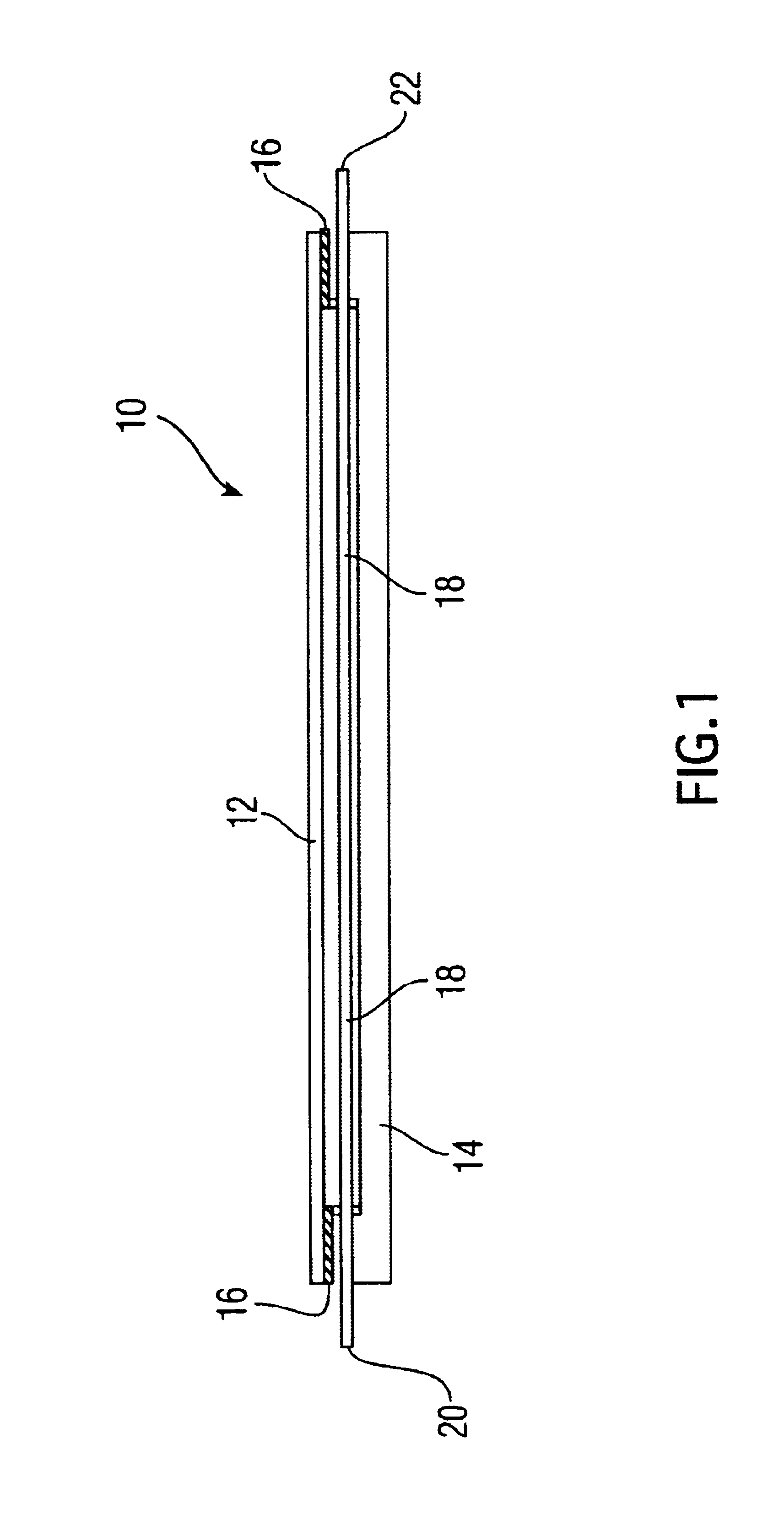Method for fabricating cell-containing implants
a cell-containing and implant technology, applied in the field of cell culture, can solve the problem of not producing sufficient contact between aggregates to produce adequate aggregate siz
- Summary
- Abstract
- Description
- Claims
- Application Information
AI Technical Summary
Benefits of technology
Problems solved by technology
Method used
Image
Examples
example 1
[0066]This example illustrates that chondrocytes propagated in spinner culture on biopolymer beads eventually aggregate into cartilage-like masses.
[0067]In this experiment, the inventors tested the hypothesis that nasal chondrocytes propagated in microcarrier spinner culture would proliferate and produce extracellular matrix components similar to that produced by articular chondrocytes. Cartilage was obtained from five patients during nasal septum reconstruction. Chondrocytes isolated by collagenase digestion were directly seeded at 4×103 cells / cm2 onto Cellagen microcarriers (100-400 cm2, derived from bovine corium, (ICN, Cleveland, Ohio)) or in monolayer culture. Monolayer and microcarrier spinner cultures were incubated at 37° C., 5% CO2 for fourteen days. Chondrocytes were harvested and cell samples enumerated in trypan blue vital dye. To analyze for proteoglycans production, cells were pulsed for 60 hours with 50 μCi / ml, 35SO4. The proteoglycans were extracted using 4M guanidiu...
example 2
[0070]Steps (1) and (2) of Example 1 are performed by the same procedures.
[0071]Step (3). The cell-seeded microcarriers are maintained in spinner culture at 60 rpm, 37° C., 5% CO2 for 14 to 21 days to allow visible aggregation to take place in enriched medium (Dulbecco essential media containing NCTC-109, OPI (oxaloacetate, pyruvate, insulin), 1-glutamine, gentamycin, and fetal calf serum). The cell-microcarrier aggregates are subsequently centrifuged at 200 g for 15 minutes and 4° C. The supernatant fluid is removed and the aggregates are resuspended in the same enriched media described above.
[0072]Step (4). The resuspended aggregates are next transferred by pipetting into the “implant assembly unit (IAU),” as shown in 10. The IAU 10 is siliconized and sterilized before use. The aggregate suspension is transferred into the individualized channel or trough 18 of the “implant assembly unit”. The top lid 12 is then positioned over bottom chamber 14, separated by the rubber gasket 16. ...
example 3
[0076]Steps (1) and (2) of Example 1 are performed by the same procedures.
[0077]Step (3). The cell-seeded microcarriers are maintained in spinner culture at 60 rpm, 37° C, 5% CO2 for 14 to 21 days to allow visible secretion of extracellular matrix to take place in enriched medium (Dulbecco essential media containing NCTC-109, OPI (oxaloacetate, pyruvate, insulin), 1-glutamine, gentamycin, and fetal calf serum). The cell-microcarrier aggregates are subsequently centrifuged at 200 g for 15 minutes and 4° C. The supernatant fluid is removed and the aggregates are resuspended in a fluid medium, such as isotonic saline, phosphate buffered saline solution or Hank's balanced salt solution, suitable for injection into the body.
[0078]Step (4). The resuspended aggregates are next transferred to a syringe or other suitable implantation device whereby the suspension is implanted directly into the anatomic site or cavity requiring the cartilage implant. During the next 14-28 days, or after a sui...
PUM
| Property | Measurement | Unit |
|---|---|---|
| Time | aaaaa | aaaaa |
| Time | aaaaa | aaaaa |
| Time | aaaaa | aaaaa |
Abstract
Description
Claims
Application Information
 Login to View More
Login to View More - R&D
- Intellectual Property
- Life Sciences
- Materials
- Tech Scout
- Unparalleled Data Quality
- Higher Quality Content
- 60% Fewer Hallucinations
Browse by: Latest US Patents, China's latest patents, Technical Efficacy Thesaurus, Application Domain, Technology Topic, Popular Technical Reports.
© 2025 PatSnap. All rights reserved.Legal|Privacy policy|Modern Slavery Act Transparency Statement|Sitemap|About US| Contact US: help@patsnap.com



